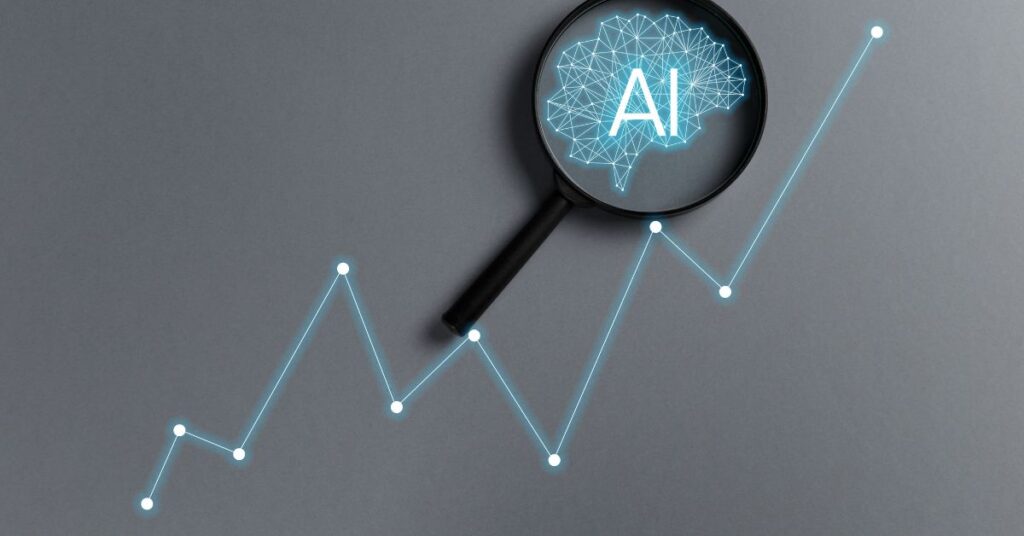Big data analytics refers to the use of advanced analytics techniques on large, complex data sets. This includes structured, semi-structured, and unstructured data from a variety of sources. The goal is to uncover hidden patterns, unknown correlations, market trends, customer preferences, and other useful information that can help organizations make more informed business decisions.
Artificial Intelligence in Big Data Analytics typically employs techniques such as data mining, statistical analysis, predictive modeling, machine learning, natural language processing, data visualization, and AI (Artificial Intelligence).
The insights gained can drive improvements in operational efficiency, customer experience, competitive advantages, new product development, and other business areas.
Table of Contents
Role of Artificial Intelligence in Big Data Analytics
Artificial intelligence technologies are playing an increasingly important role in enhancing big data analytics capabilities and unlocking deeper insights from data.
Here are some of the key ways in which AI is applied:

Data Preprocessing and Cleaning
AI techniques like machine learning can automate the tasks of data preprocessing, cleansing, normalization, and transformation. This prepares the data for analysis.
Data Visualization and Reporting
AI generates dynamic data visualizations and dashboards that provide actionable insights. It also automates report generation.
Predictive Analytics
AI algorithms like deep learning analyze current and historical data to make predictions about future outcomes and trends. This supports improved forecasting.
Optimization and Personalization
AI models help optimize processes and resources. It also enables personalized recommendations and content tailored to individual users.
Artificial Intelligence Methods Used in Big Data Analytics
There are a few prevalent AI approaches used for big data analytics:

Machine Learning
Machine learning algorithms automatically learn from data patterns and insights without explicit programming. Machine Learning techniques used include supervised learning, unsupervised learning, reinforcement learning, and deep learning.
Natural Language Processing (NLP)
NLP enables computers to analyze, process, and derive insights from text and speech data. This allows for unlocking insights from unstructured data like documents, emails, social media, chats and call transcripts.
Computer Vision
Computer vision analyzes and extracts information from visual data like images and videos using pattern recognition and deep learning techniques. This can support facial recognition, object detection, etc.
Benefits of Artificial Intelligence in Big Data Analytics
Applying AI to big data analytics provides several key benefits:
Faster Insights from Large Datasets
AI algorithms can rapidly analyze massive datasets and accelerate time to insight. Tasks that take humans months can be done in hours or minutes with AI.
More Accurate Predictions and Forecasting
The predictive capabilities of AI models significantly improve forecasting accuracy across sales, demand, prices, inventory, and other business metrics.
Automated Identification of Data Patterns and Trends
AI excels at finding hidden correlations, segments, outliers, trends, and other data patterns that humans cannot easily detect. This drives targeted marketing, fraud prevention, etc.
Continuous Improvement and Adaptation
AI systems continuously learn from new data, allowing analytics and models to adapt and improve over time without human intervention.
Challenges of Implementing Artificial Intelligence in Big Data
There are some key challenges to address when applying Artificial Intelligence to big data:
Data Quality and Bias
If source data is incomplete, noisy, or biased, this gets amplified through AI models leading to poor results. Data preprocessing is critical.

Integration Complexity
Integrating siloed data and incompatible systems to feed AI algorithms can be complicated and expensive.
Lack of AI Expertise
Most companies lack data scientists and Machine Learning engineers to develop custom AI models. Reliance on generic platforms has limitations.
Interpretability of AI Models
It can be hard to explain why AI models make certain predictions or recommendations. Lack of transparency hinders adoption.
The Future of Artificial Intelligence in Big Data
Artificial Intelligence is poised to become an indispensable part of big data analytics:

Smarter Algorithms and Models
With advances in Machine Learning, future AI algorithms will become more accurate, robust, and scalable. They will derive deeper insights from the data.
Democratization of Artificial Intelligence
Automated Machine Learning platforms from Google, Microsoft, Amazon, and startups will lower barriers to AI adoption for smaller firms.
Hybrid AI and Human Collaboration
AI will augment and enhance human capabilities. Combining AI and human intelligence will drive the best analytics outcomes.
Conclusion
AI delivers transformative benefits to big data analytics – from automated data preparation to superior predictions. It extracts insights that were previously impossible.
As AI technology continues maturing, its role in analytics will keep rising. Users need realistic expectations and an awareness of associated challenges. Thoughtfully applied, AI-driven big data analytics will become a key competitive advantage for organizations.
FAQs
What are some common use cases of AI in big data analytics?
Some common use cases include predictive maintenance, customer churn prevention, healthcare diagnosis, targeted marketing, supply chain optimization, fraud detection, and price optimization.
How is machine learning used in big data analytics?
Machine learning techniques like classification, clustering, regression, and neural networks can uncover patterns, make predictions, categorize data, and model complex relationships in big datasets.
What are some challenges in applying AI to big data analytics?
Key challenges include data quality issues, integration with existing systems, lack of expertise, interpretability of models, AI biases, and high costs. Companies must strategically address these barriers.
What skills are required to implement AI in big data analytics?
Key skills include programming languages like Python and R, ML frameworks like TensorFlow, data visualization, cloud platform experience, statistical modeling, and both data engineering and data science expertise.
What are some leading platforms for AI-driven big data analytics?
The top platforms are IBM Watson Studio, SAS Viya, Microsoft Azure Machine Learning, Google Cloud AI Platform, H2O Driverless AI, Scale AI, and RapidMiner. Each offers different strengths.









